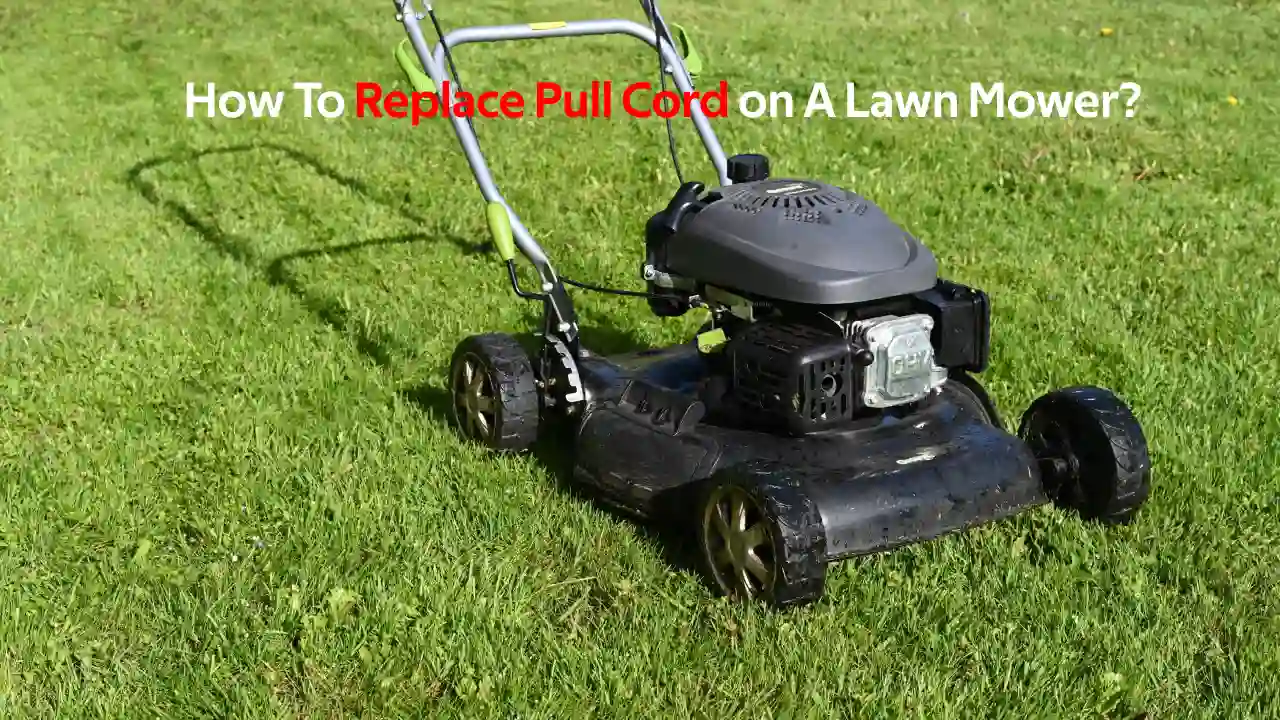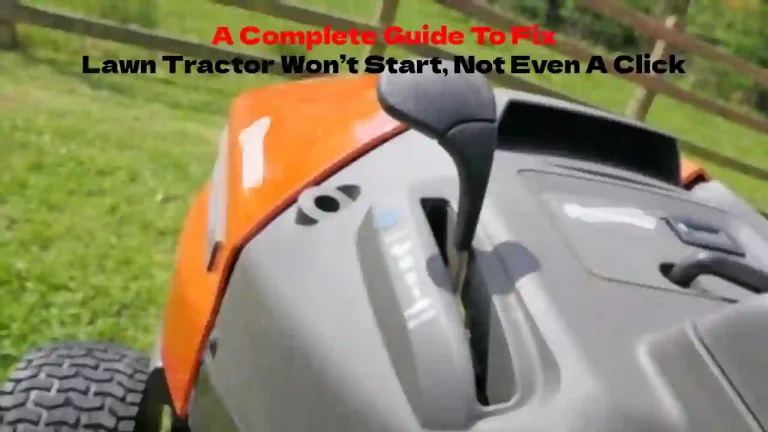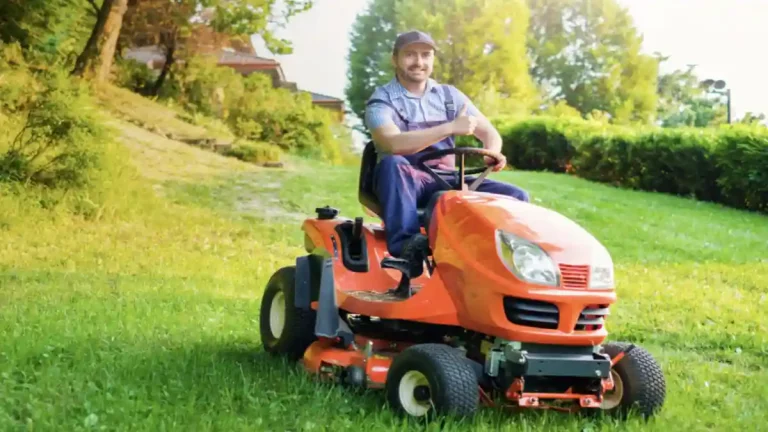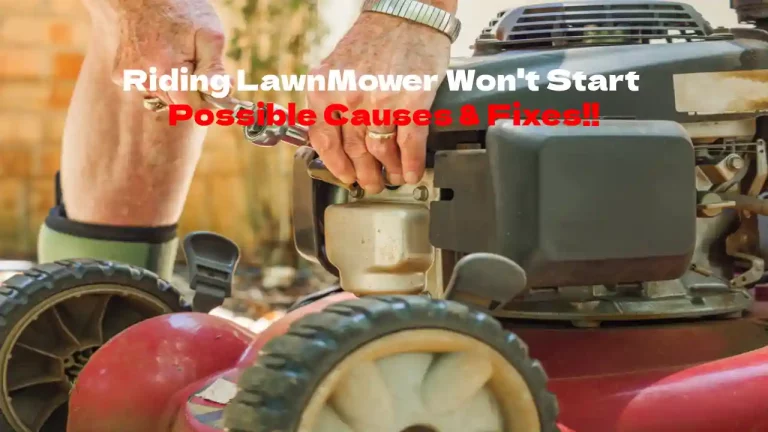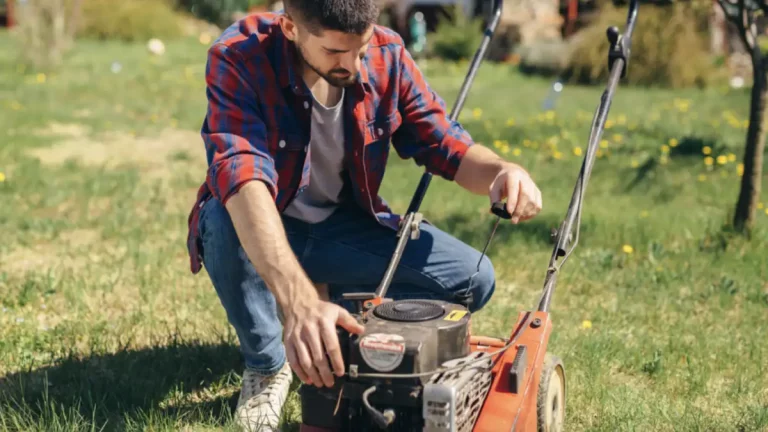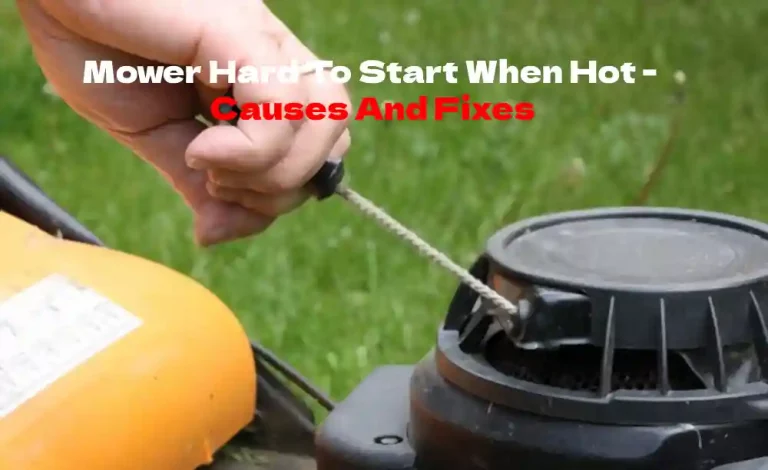Gas lawnmowers have a lot of benefits, such as ease of use and not having to worry about a long power cord getting damaged. However, one thing that many don’t appreciate is using a pull cord to start it and the issues that come with it.
There are few things as frustrating as having your lawnmower pull cord break when you try and start it, so knowing how to replace it before, or if this happens, is essential.
For both detachable and non-detachable rewinding units, the first step is to remove the pull cord before replacing it with the new one. You need to rewind the pulley halfway, line up the holes, and insert and secure the new thread. Once the cable is in, you can reattach the unit or cover it again.
Though installing a new pull cord can seem straightforward, the process will differ depending on your mower.
Before attempting this, you must have a general idea of how this system works and how a pull cord works, as you can damage your mower if you make a mistake during the installation.
Luckily, the steps below are more in-depth than the short explanation above.
Replacing A Lawn Mower Pull Cord Step By Step
Since replacing or repairing anything in a motor or mechanically advanced machine can be pretty nerve-wracking, we have set out an easy-to-follow guide to help you.
If you follow these steps correctly, there should be little that can go wrong.
These steps will differ a little depending on your lawnmower and the rewinding unit it uses, and these are just to give you a rough idea as they are similar for most mowers.
Safety First, ensure your mower won’t start
Before taking off any covers or putting your fingers near mechanical parts, you first need to unplug the spark plug wires to ensure the mower won’t miraculously switch on by itself.
For many, this seems paranoid, but it is better to be safe.
Remove any covers and the starter housing
Once you are 100% sure your mower is secure, you can remove any covers over the starter housing and then the unit itself.
There should be a couple of screws or bolts keeping it in place, be sure not to lose them. If the rewind pulley is attached to your starter housing, remove it.
Remove the old pull cord
Once the rewinding pulley or starter housing is no longer attached, you should be able to see the old pull cord. If the cable has broken, unwind the rest of it from the system.
If the line is in one piece, pull it until the pulley is wound up and remove it while keeping it in place and aligned with the holes.
Insert the new pull cord
Once the old cable is detached, you can use a screwdriver to keep the holes aligned while measuring and cutting the new line.
Rewind the pulley halfway if it isn’t, and align the feed holes. With everything in place, you can attach the new cord like the old one was.
Attach the cord handle
Once the cord is reattached and in its place, you can tread it through the necessary hole and attach the handle to it.
Do not attach the handle to the normal position yet, as this will complicate the rest of the process.
Reattach the rewinding unit or housing
You can now reattach everything you took off earlier. If you have a detachable rewinding unit, secure it in place again.
If you just removed the starter housing, you can attach that again and ensure that the screws or colts are secure. You should also ensure that the cord and handle go through the feed holes.
Attach the cord handle to the push/steering handle
With everything else back in place, you can attach the pull cord handle to the back of your lawnmower where it usually is.
It would be best if you also reinserted the spark plug cables to make sure that you can start your lawnmower.
Test the new pull cord
The most important part now is that the new pull cord is in place and works correctly. The simplest way to do this task is to attempt to start your lawnmower.
If there are any issues, you should consult your user manual or a mechanic that can help you.
Possible Issues After Replacing Lawn Mower Pull Cord
Though you can now replace the pull cord of your lawnmower, there might be some other problems that appear after.
Unfortunately, mistakes can happen quickly, and a few things can go wrong during the replacement process. Below are some of the commonly found issues and what to do if they occur.
Also read Are Lawn Mower Blades Universal to have a better understanding.
Lawn Mower Pull Cord Is Stuck
One of the most common issues after replacing a pull cord on your lawnmower is that the cable won’t pull anymore. This problem usually occurs when the line has not wound up correctly or has managed to go over itself in a way that stops that cable from moving freely.
The fix for this problem is simple enough, follow the steps above to remove the necessary covers or the rewinding unit.
Once removed, you should be able to see the problem and fix it quickly. Before replacing everything, you should check that it doesn’t happen again.
If the problem persists, you should consult your user guide or a mechanic.
The Pull Cord Does Not Rewind
Another common issue is that the pull cord does not rewind up once you have pulled it.
If you do not wind the pulley correctly, your mower won’t rewind the cable as it should. Additionally, there is also the chance of a broken pulley causing this.
The fix for this problem is another simple one, use the steps above to remove the covers and housing, check the problem, rewind the pulley, and reattach everything.
If rewinding the pulley does not work, you likely have a broken pulley, and I suggest consulting the user manual or taking it to a repair shop if you don’t know how to do it yourself.
Conclusion
Though some things might go wrong when replacing your lawnmower’s pull cord, they are usually as easy to fix as the job itself.
If you are struggling or don’t want to attempt doing this yourself, you can always ask a professional for help.
However, following the steps above should help you a lot and put you right back behind your mower in no time at all.
Know How to Turn Off Your Lawn Mower if you are having issues.

